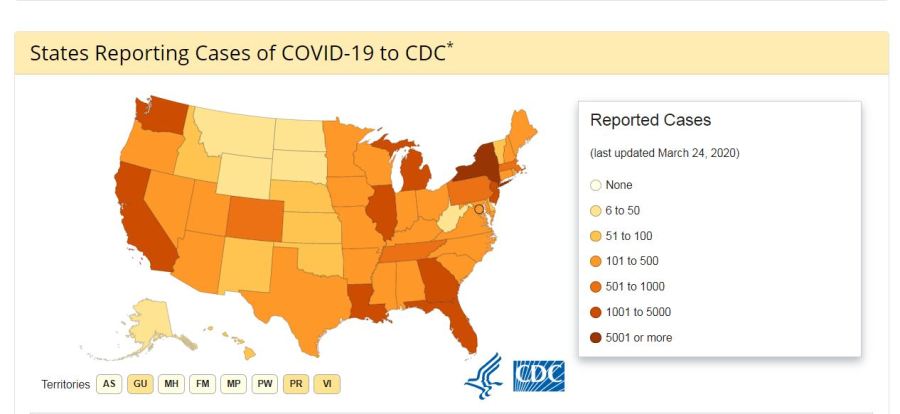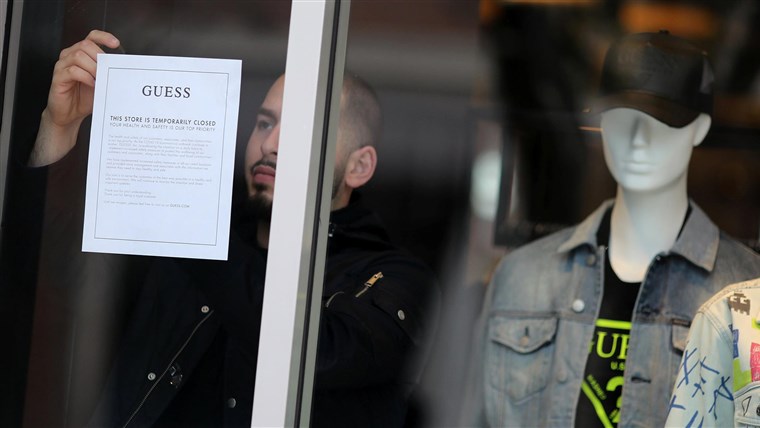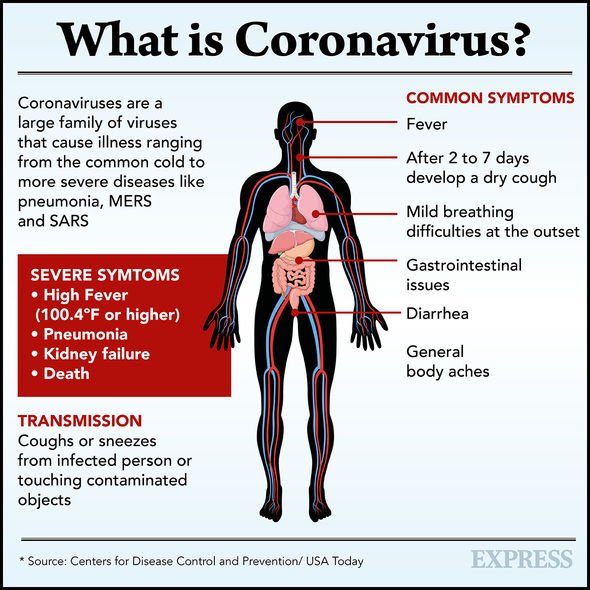
There have been over 15 million confirmed coronavirus cases around the world with 618,000 deaths. Of those cases 8,500,000 have recovered. In the US there are over 4 million confirmed cases and over 145,000 have died in the 6 months since the first case was confirmed in the US. Almost 8,500,000 of the US cases have recovered. The United States has set another grim record for coronavirus infections, with more than 75,600 new cases confirmed. At least 11 states are reporting record hospitalizations, with nearly 1,000 new deaths in just 24 hours. Officials in Texas and Arizona have put out calls for refrigerated trucks, as morgues overflow with the bodies of COVID-19 patients. Texas and Florida both reported their highest death tolls of the pandemic.
As the number of new global coronavirus cases reaches record highs, the World Health Organization is warning the coronavirus outbreak will continue to worsen if governments don’t take basic public health measures. Reports the number of coronavirus deaths in Latin America has now exceeded the death toll in the United States and Canada. Researchers estimate the US will have 219,864 total Covid-19 deaths by November 1, according to the Institute for Health Metrics at the University of Washington.
In Florida, confirmed coronavirus cases topped 300,000 even as Disney World completed a phased reopening of its Orlando theme parks. Nearly 50 Florida hospitals said they were out of ICU beds. In Miami, hospitals have run out of regular intensive care beds, with new patients moved into converted ICUs. Governor Ron DeSantis said he was mobilizing 1,000 medical workers to fill critical staffing shortages.
California, the most populous state and the first to shut down months ago, appeared to have Covid-19 under control — only to suffer a massive resurgence and surpass New York with the most coronavirus cases in the nation. California, which now has 417,000 confirmed cases due to the recent spikes, is largely shutting down again. California Governor Gavin Newsom has a plan to halt the recent surge by ordering all indoor restaurants, wineries, movie theaters and museums to be closed again. Bars have been ordered to cease all operations. Indoor businesses have been shuttered in many areas. Newsom said the new shutdowns are needed to address the public health crisis. The Los Angeles and San Diego school districts have announced that all classes will be conducted online at the start of the school year due to the pandemic.
Covid-19 is set to become one of the leading causes of death in Los Angeles County, according to Barbara Ferrer, the county’s health director. “It’s killing more people than Alzheimer’s disease, other kinds of heart disease, stroke and COPD,” Ferrer said. Comparing Covid-19 to the flu, Ferrer said data shows Covid-19 killed twice as many people in six months as the flu did in eight months.
The city of Atlanta announced a similar plan. In New York, Governor Andrew Cuomo said schools will be allowed to reopen, but only in regions with low daily infection rates. At least 41 states have some kind of mask requirement in place or planned. In Colorado, Governor Jared Polis issued a statewide mask mandate, a week after refusing public health officials’ pleas to require facial coverings in public. Arkansas Republican Governor Asa Hutchinson issued a similar mask mandate. The CDC reports that 10 states have reported 10,000 new cases while three states each reported over 60,000 new cases in the last week.
Several vaccine trials are progressing well, and researchers say a vaccine might be publicly available by early 2021. Health and Human Services Secretary Alex Azar said any Covid-19 vaccine that’s sponsored by the US government will be free or affordable for the American public.
Read more

As concerns about the coronavirus rippled across the globe, the US president declared the Covid-19 outbreak a national emergency as public life in America continues to grind to a halt. Schools have closed to millions of students, creating anxiety for working parents across the country. Travel bans have been widened and some cities across America have issued curfews or “shelter in place” orders to slow the spread of the virus. More “shelter in place” orders are expected as the number of confirmed cases continues to rise and has now been found in all 50 states.
Shelter in place orders will come from local government rather than federal. A growing number of countries have also imposed lockdowns that effectively shut down public life, but the details of such lockdowns vary dramatically. Italy banned all public gatherings and set a 6 p.m. curfew but allowed travel for work or health reasons, while in China, millions of residents are restricted from even going to shop for groceries.
The “shelter-in-place” order that San Francisco adopted has fairly large exemptions for health, work, food and even exercise. City officials ordered residents to remain in place at their homes except for essential activities, essential business, and essential government functions, including tasks essential to maintain health and safety, such as obtaining medicine or seeing a doctor or getting necessary services or supplies for themselves or their family or household members, such as getting food and supplies, pet food and supplies necessary for staying at home.
The order also includes:
- Engaging in outdoor activity, such as walking, hiking or running provided that they maintain at least 6 feet of social distancing.
- Caring for a family member in another household.
- Caring for elderly, minors, dependents, people with disabilities or other vulnerable persons.
Treasury Secretary Steven Mnuchin outlined a variety of potential proposals to Senate Republicans as part of a legislative package to help Americans and industries that are reeling from the coronavirus. The administration proposed an initial $250 billion could be sent to Americans as early as the end of April if it can muster congressional approval.
Sen. John Thune noted that getting cash assistance to Americans is something that has historically taken some time, but “I think there are ways now electronically that you can process things more quickly.” The proposal has fairly widespread support from Senate Republicans, who say it will offer immediate assistance to Americans impacted by the virus. Some lawmakers have varying ideas about how the proposal should work, including who should receive the payments and how much each American should get.
Read more

The World Health Organization is warning the number of cases of COVID-19 caused by coronavirus is approaching 100,000 worldwide, with more than 3,100 deaths due to the illness. Most of the deaths and infections have occurred in China, where health officials reported 139 new cases and 31 new deaths recently.
South Korea confirmed 438 new cases, making their total number of confirmed cases over 5,700. Italy has over 3,000 confirmed cases and more than 100 deaths have been reported. Officials have closed down schools in Italy, South Korea, Japan, France, Pakistan, Iran and elsewhere, with nearly 300 million children kept home from school worldwide.
In the United States, there are now more than 300 confirmed cases and the death toll has reached 11 — with 10 of the deaths occurring in Washington state. California recorded its first coronavirus death: an elderly man who traveled on a Princess cruise ship that departed from San Francisco and traveled to Mexico in February. Governor Gavin Newsom has ordered the ship quarantined off the coast of California and is airlifting tests for passengers and crew. Governor Newsom made the announcement as he formally declared a state of emergency across California.
The CDC issued new guidance for clinicians on screening patients for novel coronavirus and assessing their risk for infection. The agency also started shipping its coronavirus assay to labs across the U.S. and in other countries. According to the US Centers for Disease Control and Prevention, 13 states in the US have reported confirmed or presumptive positive cases of COVID-19. Washington State has the highest number of cases with 70 confirmed illnesses and 10 associated deaths. California has 60 positive cases and 1 death.
Of the confirmed cases in California, 42 of them are linked to repatriation or international travel. Cases are rising rapidly in New York, where there are 22 confirmed cases across the state with an additional 24 testing results pending, and 122 individuals under investigation. In response to the rise in cases, the US Senate passed an $8.3 billion bill to fight the outbreak. This came just a day after the bill was approved by the House of Representatives. More than $3 billion is expected to be put into research and development of treatments, vaccines, and testing.
Read more

The death toll from Coronavirus (COVID-19) cases has surpassed 3,000 with the number of cases reaching over 90,000. While 51,000 people who have contracted the illness have since recovered, the head of the World Health Organization (W.H.O.) said that the global mortality rate for Covid-19 was 3.4 percent, a figure that primarily reflects the outbreak in China, where the vast majority of cases have been detected.
The organization’s director general, Dr. Tedros Adhanom Ghebreyesus, said at a news conference that Covid-19 is deadlier than the seasonal flu but did not transmit as easily. Dr. Tedros said. “By comparison, seasonal flu generally kills far fewer than 1 percent of those infected.” He added “While many people globally have built up immunity to seasonal flu strains, Covid-19 is a new virus to which no one has immunity,” meaning more people can be infected and some will suffer severe illnesses, Dr. Tedros said. The coronavirus does not transmit as efficiently as the flu but “causes more severe disease.”
While the prospect of being infected with a new virus can be frightening, the CDC warns that the symptoms to look out for are fever, coughing and shortness of breath. These symptoms usually appear between two days and two weeks of exposure to the virus. According to a report in the Journal of the American Medical Association, as many as 98% of COVID-19 patients have a fever, between 76% and 82% have a dry cough, and 11% to 44% report exhaustion and fatigue.
The disease appears to become more severe with age, with the 30 to 79 year-old age range predominating the detected cases in Wuhan. The severity of COVID-19 symptoms can range from very mild to severe. People who are older or have existing medical conditions, such as heart disease, may be at higher risk of serious illness. This is similar to what is seen with other respiratory illnesses, such as influenza.
It’s unclear exactly how contagious the new coronavirus is but it appears to be spreading from person to person among those in close contact. It may be spread by respiratory droplets released when someone with the virus coughs or sneezes. Although there is no vaccine available to prevent infection with the new coronavirus, you can take steps to reduce your risk of infection. Although there is no vaccine available to prevent infection with the new coronavirus, you can take steps to reduce your risk of infection. WHO and CDC recommend following the standard precautions for avoiding respiratory viruses:
- Wash your hands often with soap and water, or use an alcohol-based hand sanitizer.
- Cover your mouth and nose with your elbow or tissue when you cough or sneeze.
- Avoid touching your eyes, nose and mouth if your hands aren’t clean.
- Avoid close contact with anyone who is sick.
- Avoid sharing dishes, glasses, bedding and other household items if you’re sick.
- Clean and disinfect surfaces you often touch.
- Stay home from work, school and public areas if you’re sick.
Read more






